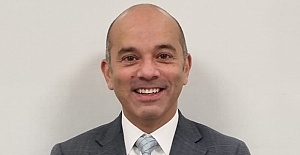During the past five years, the aggregate capital, assets and total loan portfolio of banks in Uzbekistan grew more than threefold, Deputy Chairman of the Central Bank of the country Ahadbek Haydarov stated on Friday, speaking at the sixth International Investment and Finance Forum held in Tashkent. "Positive changes observed in the structure of the resource base of the banks' loan portfolio should also be noted. Particularly during recent years, the share of domestic sources in the loan portfolio of the banks increased to 86 per cent compared to 46 per cent in 2000, with a corresponding reduction in the share of foreign loans," Haydarov said. The share of the population's deposits and economic bodies increased in the structure of the banks' resource base at an annual growth rate of 31 per cent for 2007-2012.
According to Haydarov, these trends show a significant increase of financial intermediation and the investment role of the commercial banks in the economy of the country.
Sustainable development of the banking system is a result of the special attention paid by the government and the Central Bank to ensure effective management and supervision of the banking system. A set of regulations and rules governing the banks' activities was developed on the basis of recommendations of the Basel Committee and international standards already in place in 1998. Moreover, the Central Bank applies effective mechanisms of remote supervision and inspections which are conducted on a regular basis, the representative of the Central Bank noted.
"Effective banking supervision and other factors helped to ensure stability and sustainable development of the banking system as confirmed by financial indicators. In particular, the capital adequacy ratio comprises on average over 24 per cent, while the standard rate of the Central Bank is10 per cent and the Basel Committee at eight per cent. Another important point is the liquidity ratio, comprising 65 per cent on average exceeding international requirements more than twice," Haydarov said.
The level of problem loans as of 2012 amounted to 0.5 per cent of the total loans. In addition, for the further quality increase of loan portfolios of commercial banks in 2004, the National Institute of Credit Information was created in order to ensure the effectiveness of banking supervision and to identify potential risks in the system.
In 2012, Uzbekistan established the credit bureau 'Credit Information Analytical Centre' whose main purpose is to improve the credit information exchange system, to reduce banking risks and increase the efficiency of services provided to banks and other financial institutions. Currently, all banks in the country have an access to the database of the credit bureau.
At present, Uzbekistan has a two-level banking system which includes the Central Bank of the Republic and 29 commercial banks. The commercial banking sector consists of three state-owned and 13 joint-stock commercial banks, four banks with foreign capital, and nine other private banks which together have more than 4100 branches and mini-banks across the country.
Along with the commercial banks there are 75 non-bank financial institutions in the country engaged in micro financing. As of April 1, 2013, the number of banking institutions per 100,000 adults equalled nearly 50 units, while the number of individuals' bank accounts amounted to 1,027 per thousand adults


 Margaret Greer has been sworn in as the new Mayor of Enfield
Margaret Greer has been sworn in as the new Mayor of Enfield Prime Minister Keir Starmer's 2025 Easter message
Prime Minister Keir Starmer's 2025 Easter message After Nesil Caliskan a by-election will be held in Jubilee ward in Enfield
After Nesil Caliskan a by-election will be held in Jubilee ward in Enfield Publishing the analysis, Labour’s Cllr Ergin Erbil said Everybody in Enfield deserves basic rights
Publishing the analysis, Labour’s Cllr Ergin Erbil said Everybody in Enfield deserves basic rights Great respect for Ataturk and enthusiastic youth celebration in England
Great respect for Ataturk and enthusiastic youth celebration in England UK AMBASSADOR TO TURKEY VISITS FETHIYE
UK AMBASSADOR TO TURKEY VISITS FETHIYE Journalists from Europe held the Turkish Media Workshop in Skopje
Journalists from Europe held the Turkish Media Workshop in Skopje The European Union called on Turkey to uphold democratic values
The European Union called on Turkey to uphold democratic values Brennan Johnson’s first-half strike seals London side’s win
Brennan Johnson’s first-half strike seals London side’s win The 'Prince of Paris' has impressed in his first EuroLeague season
The 'Prince of Paris' has impressed in his first EuroLeague season Saran Media And Euroleague Basketball Extend Media Rights Partnership for Four More Years
Saran Media And Euroleague Basketball Extend Media Rights Partnership for Four More Years Will Rangers be Jose Mourinho’s next victim?
Will Rangers be Jose Mourinho’s next victim? UK, EU reach landmark agreement on food, fishing ahead of London summit
UK, EU reach landmark agreement on food, fishing ahead of London summit Perry Scott to become Enfield Council Chief Executive
Perry Scott to become Enfield Council Chief Executive Residents welcomed back to Edmonton Leisure Centre
Residents welcomed back to Edmonton Leisure Centre Barclays has become the biggest UK lender so far to cut mortgage rates
Barclays has become the biggest UK lender so far to cut mortgage rates















